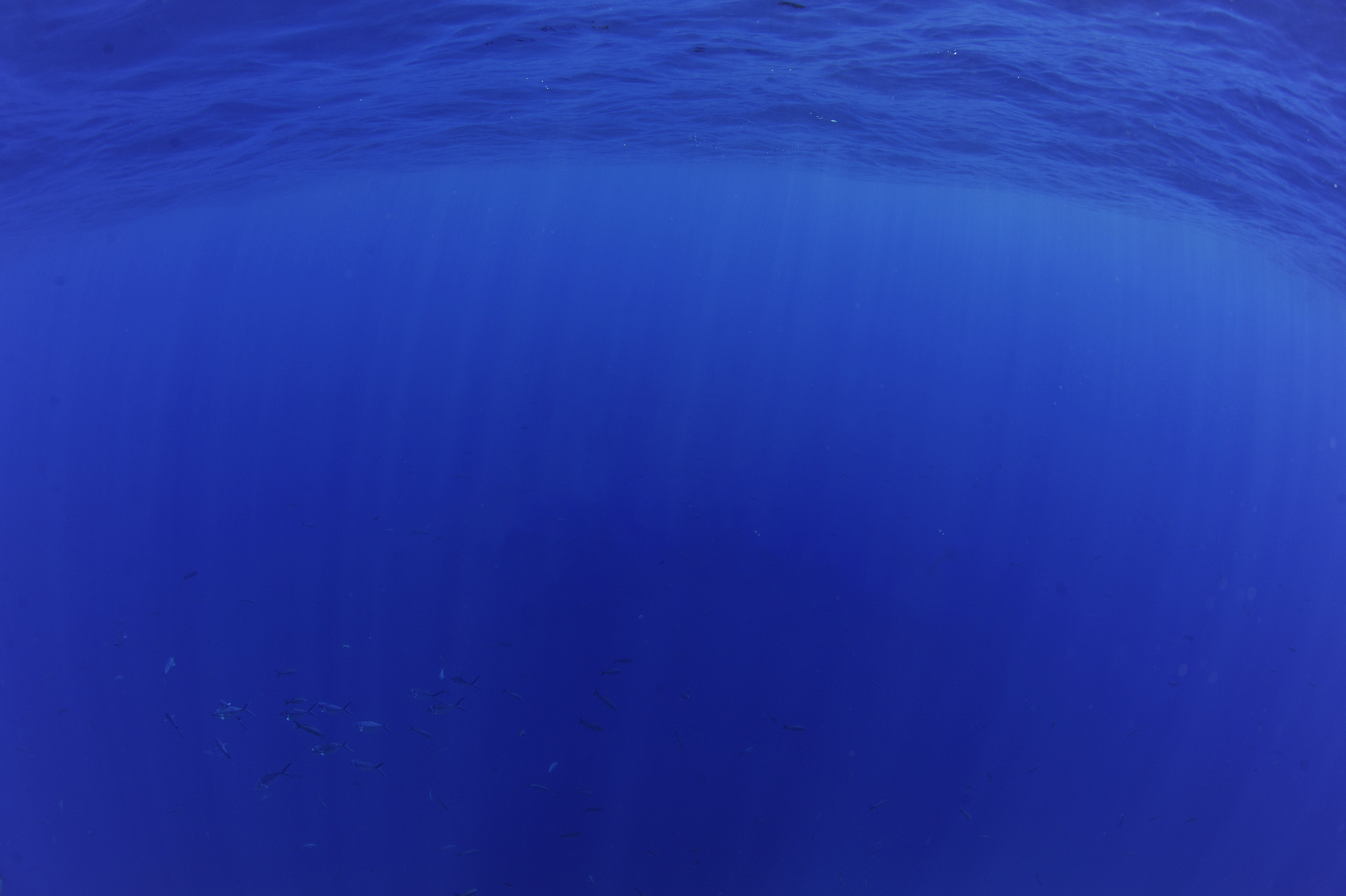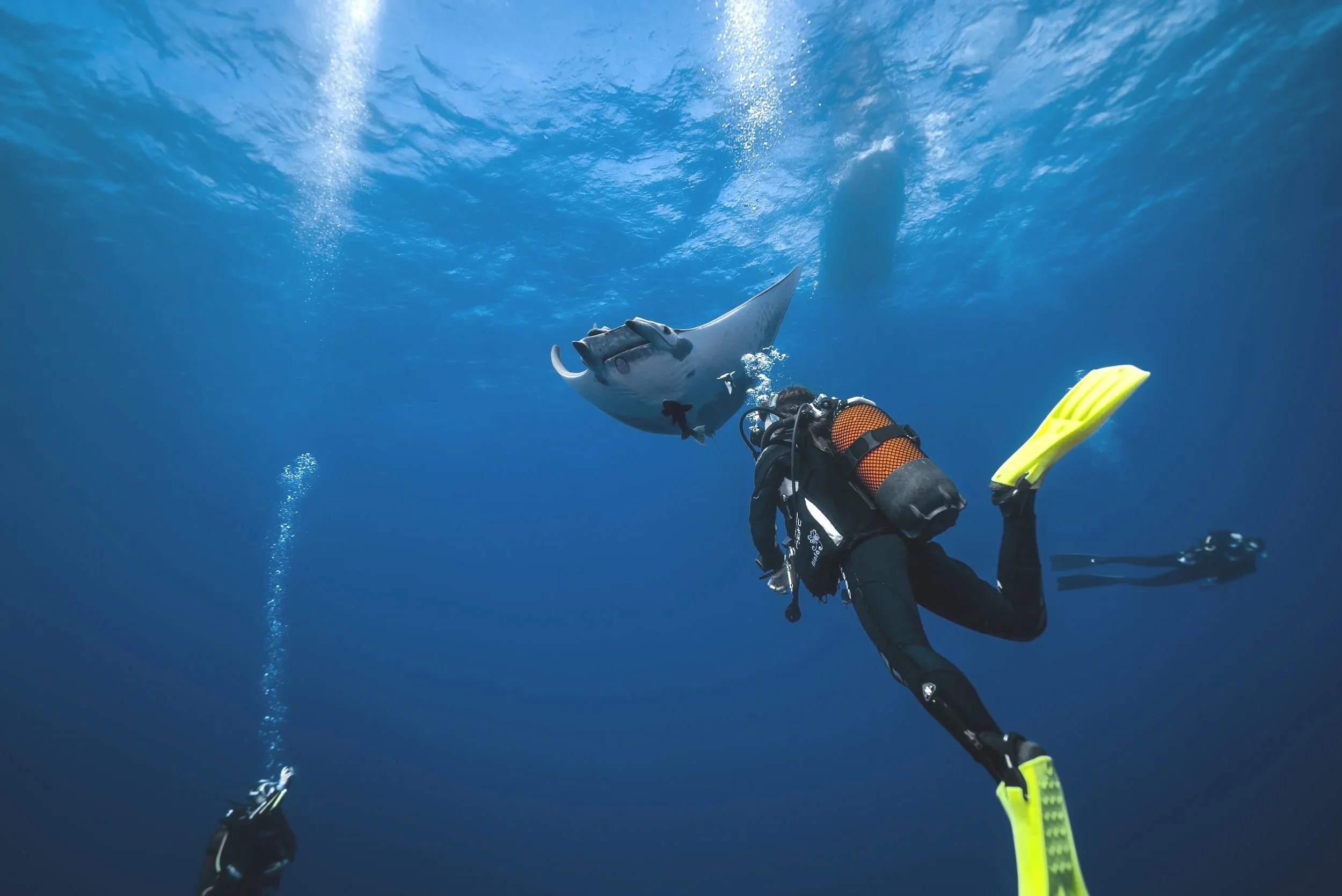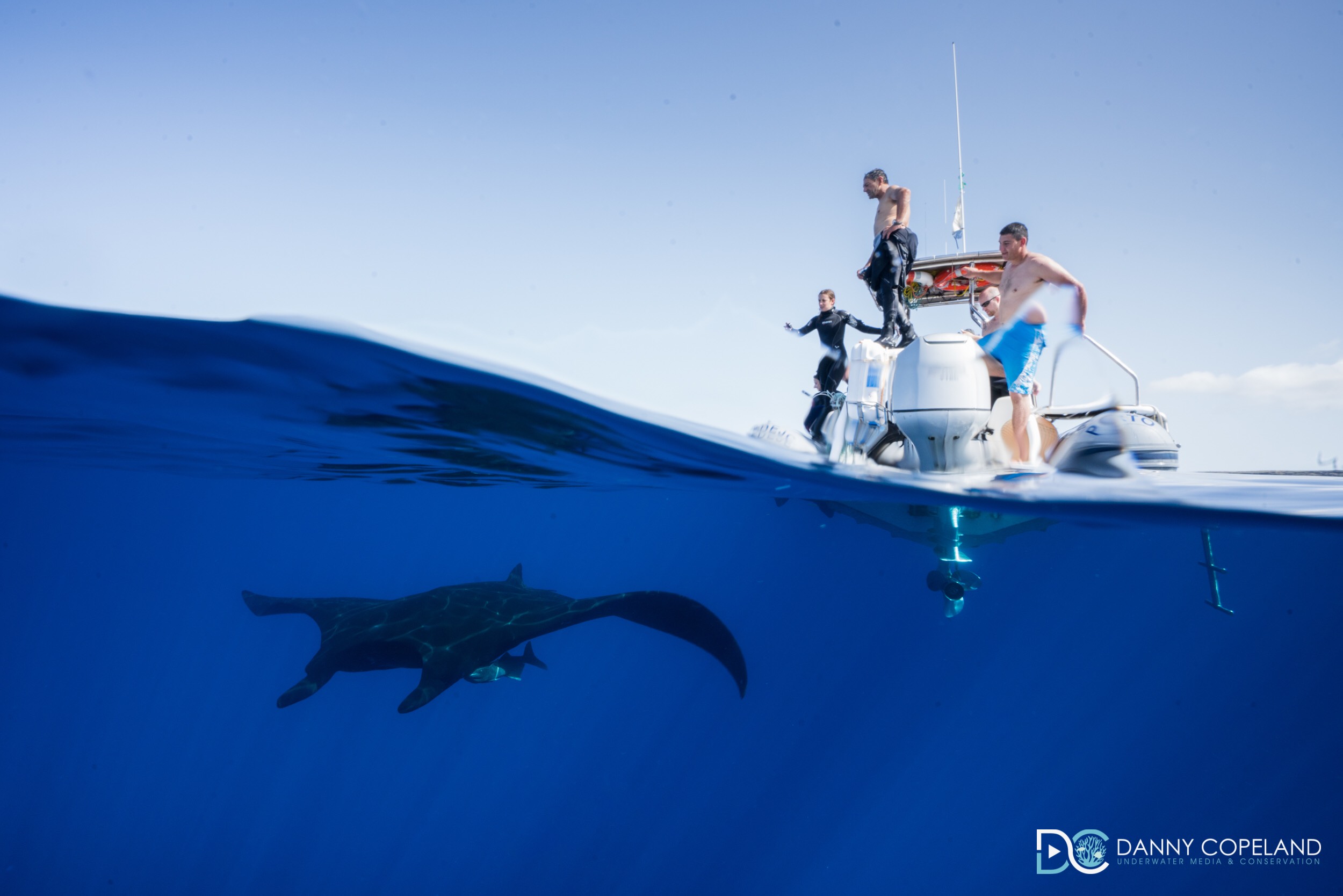
PROJECT OVERVIEW
©Danny Copeland
The Azores and Canary Islands represent two of the most important known aggregation sites for mobulid rays in the Eastern Atlantic.
In the Azores, Sicklefin devil rays (Mobula tarapacana) are regularly seen in large groups at offshore seamounts such as Ambrósio and Princesa Alice. These aggregations are unique, offering divers close interactions with mature adults, many of which are pregnant females. The islands also host Oceanic manta rays (M. birostris) and Spinetail devil rays (M. mobular). The Azores was the first place in the world where a photo-ID database was created for devil rays, building a foundation for long-term study.
In the Canary Islands, mobulid rays were historically overlooked, but recent work has revealed their presence across the archipelago. Species including M. tarapacana, M. birostris, and even the lesser-known Bentfin devil ray (M. thurstoni) have been documented. Citizen science, collaboration with more than 80 dive centres, and the recovery of traditional ecological knowledge from local fishers have rapidly advanced understanding in the region. The Canary Islands are now recognised as a key site for mobulid presence in the Eastern Atlantic, with growing efforts to assess connectivity with the Azores and beyond.
Together, the two projects form the backbone of research into mobulid rays in the Eastern Atlantic—filling knowledge gaps, supporting conservation, and engaging local communities in the stewardship of these species.
PROJECT GOALS
The shared mission of Manta Catalog Azores and Canary Islands is to:
Advance knowledge of mobulid ray population dynamics, ecology, and migratory behaviour in the Eastern Atlantic.
Identify and protect critical habitats, including key aggregation sites, that are essential for feeding, reproduction, and migration.
Build robust long-term photo-ID databases to support monitoring and international collaboration.
Study the environmental and oceanographic factors driving seasonal visitation patterns.
Engage divers, local communities, and stakeholders through education, citizen science, and outreach, highlighting the conservation importance of mobulid rays.
Provide science-based recommendations to guide sustainable eco-tourism, fisheries management, and marine spatial planning in the region.

PROJECT LEADER - ANa SOBRAL
Ana’s fascination with the ocean began in childhood and developed into a career dedicated to marine research and conservation. After early work in Mozambique with whale shark and manta ray projects, she moved to the Azores to pursue her MSc and discovered that the islands are one of the few places where Sicklefin devil rays gather in large groups. Since 2012, Ana has led Manta Catalog Azores, building a global-first photo-ID database for devil rays and spearheading collaborations with divers, operators, and scientists to unlock the mysteries of these deep-diving animals.

PROJECT LEADER - Alicia Rodríguez Juncá
Raised in Madrid but drawn to the sea, Alicia studied Biology and later completed an MSc in Biodiversity and Conservation in the UK. After moving to the Canary Islands, she joined the University of La Laguna’s cetacean research group before embarking on a PhD on marine megafauna interactions with human activities. Intrigued by the poorly documented presence of mobulid rays in Canarian waters, she reached out to the Azores team and launched Manta Catalog Canary Islands in 2021. Her work combines scientific research, citizen science, and local knowledge to bring visibility and protection to these species in the archipelago.

Key Achievements - azores
Established the first Portuguese mobulid, and sickle fin devil ray photographic ID database which, so far, has documented more than 300 mobulids.
Established a wide network of collaborators with dive centres and whale watching companies in the region.
Collected tissue biopsy samples for genetic analysis to study population structure and assess connectivity between the Azores and other regions in the Atlantic Ocean.
Confirmed the presence of three mobulid species occurring in the Azores.
Key Achievements - CANARY ISLANDS
Created the first Spanish photo-ID database and sightings registry for mobulid rays.
Engaged more than 80 dive centres and whale watching operators across the archipelago.
Confirmed the presence of Mobula thurstoni in the region for the first time.
Documented fishers’ traditional ecological knowledge of mobulids, revealing historical and cultural insights.
Conducted an extensive literature review, uncovering early records of mobulids in the Canary Islands.
Photos from the field







































